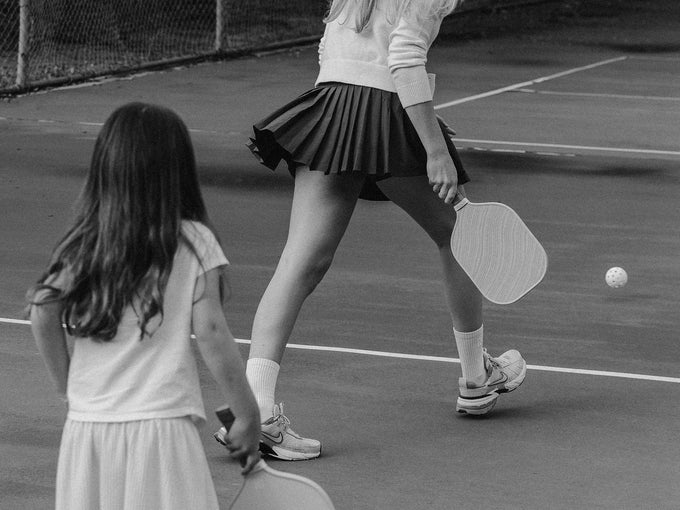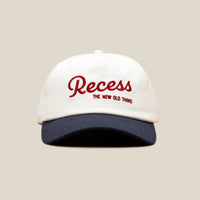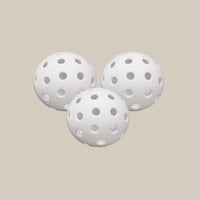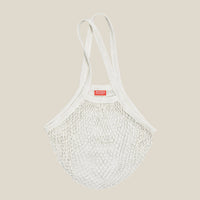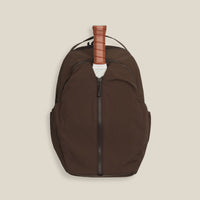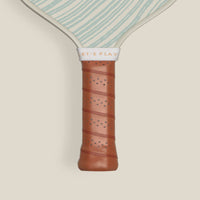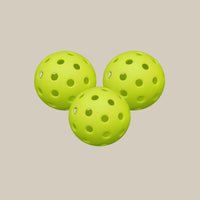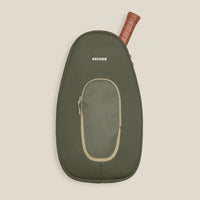Indoor vs. Outdoor Pickleballs: 5 Key Differences
In the exciting world of pickleball, choosing the right ball can significantly impact your game. Whether you're hitting the indoor courts or enjoying a sunny day outside, understanding the key differences between indoor and outdoor pickleballs is crucial. Let’s dive into these differences and explore how they can influence your gameplay.
1. Design and Construction
One of the most noticeable differences between indoor and outdoor pickleballs is their design. Indoor pickleball balls are engineered with fewer and larger holes compared to outdoor balls. This design allows for a softer, more controlled flight, making the ball easier to manage on indoor courts where air currents are minimal. The larger holes also help in reducing drag, allowing the ball to glide smoothly through the air, providing a predictable trajectory.
In contrast, outdoor pickleball balls are designed with more and smaller holes. This design helps for handling outdoor conditions where wind and other elements can affect the ball's flight. The smaller holes help to reduce the impact of wind resistance and make the ball more stable during play. This increased stability is crucial for maintaining accuracy and control when playing in open environments where wind and weather conditions come into play.
The materials used in these designs also differ. Indoor pickleball balls are made from a softer plastic, which enhances their feel and performance on smooth indoor courts. On the other hand, outdoor pickleball balls are constructed from a more robust plastic designed to withstand the harsher conditions of outdoor play. This material is more resistant to cracking and deformation, ensuring the ball maintains its shape and performance over time.
2. Material Durability
Durability is a significant factor when choosing between indoor and outdoor pickleballs. Indoor pickleball balls are usually made from softer plastic materials that are ideal for the smooth and even surfaces of indoor courts. However, these softer materials may not be as durable when exposed to the rougher surfaces and elements found outdoors. Over time, indoor balls may wear out more quickly when used on abrasive outdoor surfaces.
Conversely, outdoor pickleball balls are crafted from more durable plastic materials. This enhanced durability is crucial for withstanding the wear and tear associated with outdoor play. The harder construction allows these balls to endure the impacts of uneven surfaces, weather conditions, and general outdoor usage. For players who frequently play outside, investing in high-quality outdoor pickleballs can be beneficial in ensuring the ball remains in good condition throughout its lifespan.
3. Bounce and Flight Characteristics
The bounce and flight characteristics of pickleballs can significantly affect gameplay. Indoor pickleball balls tend to have a softer bounce due to their design and material. This softer bounce is ideal for indoor courts, where the surface is typically smooth and even. The softer bounce allows players to have better control over their shots and provides a more predictable response during play.
In contrast, outdoor pickleball balls have a firmer bounce. This is due to their harder construction and material, which helps the ball maintain its shape and performance on various types of surfaces. The firmer bounce can be advantageous in outdoor play, where the court surface may not be as smooth. This increased bounce firmness helps players maintain control and accuracy, even in challenging outdoor conditions.
The flight characteristics of pickleballs are also influenced by their design. Indoor pickleball balls have a flight pattern that is less affected by air currents, making them more predictable in controlled environments. On the other hand, outdoor pickleball balls are designed to handle the effects of wind and other environmental factors.
4. Weight and Feel
The way a ball feels and weighs can make vital contributions to your game strategy and performance. You’ll find that Indoor pickleball balls are generally lighter, which contributes to a softer feel during a game. This lighter weight allows for greater mobility and control, making it easier for players to make precise shots and respond quickly to their opponents.
Outdoor pickleball balls, on the other hand, are usually heavier and more substantial. This added weight helps the ball resist the effects of wind and provides a more stable flight path. The heavier feel of outdoor pickleballs can also give players a better sense of control and power when playing on outdoor courts.
5. Cost and Longevity
Cost is an important consideration when choosing between indoor and outdoor pickleballs. Indoor pickleball balls are often less expensive due to their softer materials and design intended for controlled environments. However, the lower cost may come with a trade-off in terms of durability. You might notice your indoor balls wear out more quickly.
Outdoor pickleball balls tend to be a bit more expensive, reflecting their enhanced durability and robust construction. The higher price is justified by the ball’s ability to withstand harsher conditions and maintain its performance over time. For players who frequently play outdoors, investing in high-quality outdoor pickleballs are a worthwhile expense. These balls are designed to provide long-lasting performance, even in challenging environments.
Choosing the Right Ball for Your Game
Selecting the right pickleball ball can enhance your gameplay experience. If you primarily play indoors, they are designed to offer the best performance and feel for controlled environments. Their softer construction and design make them ideal for smooth indoor courts, providing a comfortable and predictable playing experience. For those who prefer outdoor play, outdoor pickleballs are the better choice. The enhanced stability and firmness of outdoor pickleballs ensure a consistent performance, even in challenging weather conditions.
If you play both indoor and outdoors, you could consider exploring hybrid pickleballs. These balls combine features from both indoor and outdoor designs, offering versatility for different playing environments. Hybrid pickleballs can be an excellent option if you frequently switch between indoor and outdoor play and want a ball that performs well in both settings.
In conclusion, understanding the difference between indoor and outdoor pickleballs is essential for optimizing your game. By selecting the appropriate ball for your environment, you can enhance your performance and overall enjoyment on the court. Whether you’re playing indoors or braving the elements outside, choosing the right pickleball can make all the difference.
For more information on the best pickleballs for your play style, check out our selection of pickleballs and outdoor pickleballs. And if you’re considering a versatile option, explore our range of hybrid pickleballs to find the perfect fit for your game and possibly even match your pickleball paddles. Happy playing!
